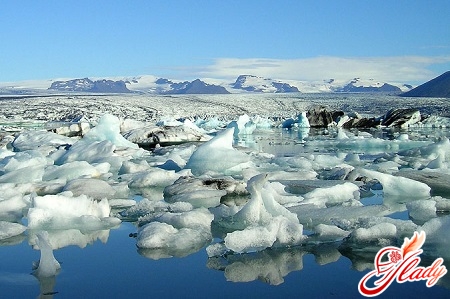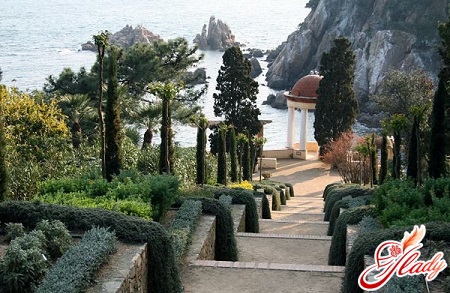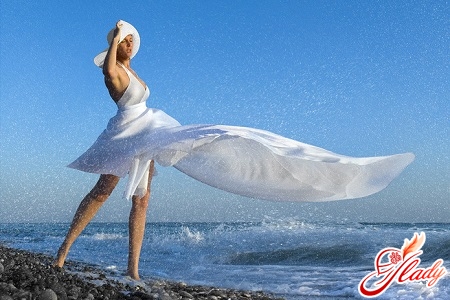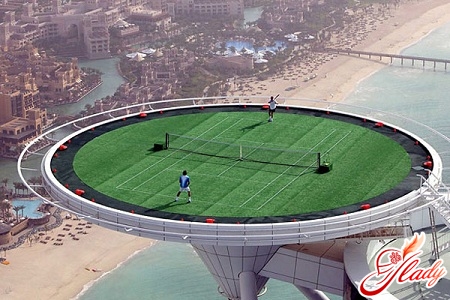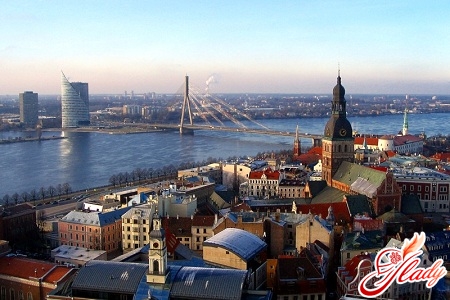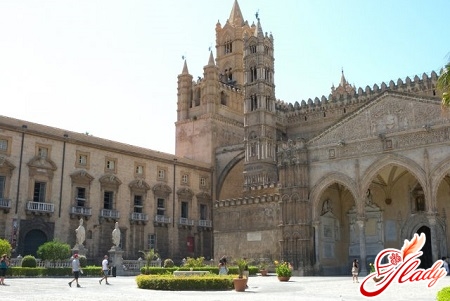
 Italy is the oldest country with a rich history andculture. In addition, the European boot is also extraordinarily colorful. Ancient buildings, centuries-old structures that make you literally freeze with delight, magnificent beaches, mild climate, not at all greedy for the emotions of local residents - all this and much more makes Italy attractive for tourists. But one name can not unite the diversity of original cultures, the historical heritage and the special charm of individual regions. And today our view is directed to the very south of Italy - the island of Sicily.
Italy is the oldest country with a rich history andculture. In addition, the European boot is also extraordinarily colorful. Ancient buildings, centuries-old structures that make you literally freeze with delight, magnificent beaches, mild climate, not at all greedy for the emotions of local residents - all this and much more makes Italy attractive for tourists. But one name can not unite the diversity of original cultures, the historical heritage and the special charm of individual regions. And today our view is directed to the very south of Italy - the island of Sicily. 

A bit of the history of Sicily
Sicily is a kind of separate country,which is part of Italy. And it's not in its location apart from the mainland - they are separated only by a narrow Messina strait about 3 km wide. And not that in the city of Palermo is the island's own parliament. And the fact is that Sicily has its own special historical path, leading it by a complex road of conquest and interpenetration of different cultures. Located at the intersection of trade routes of the Mediterranean Sea, the island since ancient times was of great strategic importance. Sicily once was part of Great Greece and was called Trinacria, which means a triangle: 3 capes, 3 seas, 3 archipelagos. And the first inhabitants of the island are the Iberian tribes of the sikans who built the pile houses. Their place was occupied by the sycles, and then by the Phoenicians who built Palermo and Trapani. Later the Greeks founded such cities as Catania, Messina, Agrigento and Syracuse - one of the richest Greek settlements. Applicants to the Sicilian lands, named "the key to the Mediterranean" were the tribes of the barbarians, the Byzantines, the Arabs, and, of course, the Romans. Numerous inhabitants of these lands carried not only destruction, but also brought their customs, culture, architectural features to the image of the island, that's why now the abundance of monuments, museums, archaeological excavations makes the island of Sicily an original and in no way different region that is part of Italy. In addition, being the most southern part of the country, it has a longer and more attractive tourist season. The purest sandy beaches and the delightful green of citrus and olive groves make the island a real highlight and a tasty morsel for travelers. 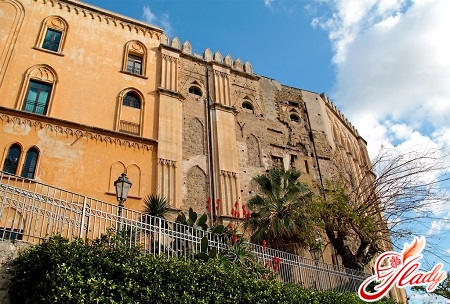


What to visit in Sicily
Sicily is the largest island in the Mediterranean Sea. Its area is more than 25 thousand square meters. km In this area there are many large cities, so for the convenience of travelers Sicily's sights are divided into the cities next to which they are located. 

The Capital Region of Palermo
Palermo is the capital of the island of Sicily. It is a large and ancient city founded by the Phoenicians and named by them Sous, which in translation meant a flower. Its modern name (in Latin sounds like Panormos - "always accessible harbor") was obtained from the Greeks. The combination of different cultures, once settled in Palermo, is extensive here, making the city's attractions even more interesting.
Royal Norman Palace RoyalThe Norman Palace is the main architectural monument of Palermo, located on Liberty Square. The elevation on which it was built has been occupied by a bastion since ancient times: the Phoenician Palace was originally built on this site, the next was the Roman one, and after that the Arabian one. The last one, the Emir's palace, was restored and turned into a royal residence by the Normans in the 11th-12th centuries. After 3 centuries of desolation the palace was again rebuilt by the Spaniards for their monarchs. Now the original Norman interior was preserved only in the Roger Hall. From this royal bedchamber offers a stunning view of the Palatine Chapel and Palermo Bay.
Palatine Chapel Past thissights, like the Palatine Chapel, it is difficult to pass indifferently. Like many other monuments of Sicily, it combines a variety of architectural styles. Palatine Chapel was built in 1143 and decorated with amazing Byzantine mosaics, superior to the decoration of the churches of Constantinople themselves. A special position here is the image of Christ Pantocrator on the ceiling.
Cathedral of the Dormition of the Mother of GodThe majesty of this landmark in Palermo is unrivaled. At the site of its construction previously housed ancient cult sanctuaries. The Cathedral of the Assumption of the Virgin was erected in 1185 during the reign of Norman King William II. Throughout its centuries-old history, the cathedral was repeatedly restored, which somewhat changed its original appearance, adding to it the Gothic features. Currently in the temple are the Norman royal sarcophagi and the ashes of the patroness of the city of Palermo - Saint Rosalia.
Admiral Church (Martorana) AdmiralThe church was erected in the 12th century during the reign of King Roger II with the means of Admiral G. Antioch. In 1463, the basilica was transferred to the Martoran monastery, located in the neighborhood. By combining these two names, the church got its name, which is used to this day. Here there are rare mosaics made by the hands of Constantinople artists.
Bolshoi Opera House Massimo Theater building,built in 1891, was designed by the architect Giovanni Battista Filippo Basile. Neoclassicism was chosen as the main architectural style. The Massimo Theater is the third largest theater in Europe, letting ahead only Paris and Vienna. Its area of 7730 square meters. m allows you to accommodate 3.5 thousand spectators. The Great Opera House in Sicily boasts performances by world celebrities such as Luciano Pavarotti, Enrico Caruso and Maria Callas. Around Massimo there is a legend about the mournful spirits living in his halls, because once in his place there was a church and an ancient cemetery.
Archaeological Museum Archaeological MuseumThe island of Sicily is named after Antonio Salinas. Being an archeologist and numismatist, he bequeathed 6000 items of his collection to the museum, in which he worked as a director for more than 40 years. The Archaeological Museum is housed in a 17th century building, formerly serving as a religious order, outlawed, after which the confiscated building passed to the national museum.
Regional Gallery of Sicily Regional Galleryis located in the palace of Abatellis, built for the chief of the port of Palermo in the 15th century. Later there was a monastery here. In the middle of the last century, the construction was badly damaged by bombing during the war. And only in 1953 in the restored building the gallery was opened. Here you can find paintings by the artist Renaissance painter Antonello da Messina, admire the great fresco called "The Triumph of Death", admire the works of Flemish painters. There is also a sculptural exposition in the gallery, as well as ancient examples of works of virtuosos of wood carving of the 12th century.
Botanical Garden The Botanical Garden of Palermo isnot just a reserve in the open. The original and original idea of uniting the national park and the research center of the city university was realized here. The garden was created at the end of the XVIII century and is located on a hill with a wonderful view of the whole city. Several Sicilian architects, working on the creation of the garden building, decorated it with numerous sculptures, bas-reliefs and statues. On the territory of the botanical garden of 10 hectares there was a place for an aquarium - a large pool with rare aquatic plants. A special place here is occupied by the greenhouse of Maria Carolina.
Orléansky Park Ornithological Orleans Park,located next to Independence Square, is home to 3000 birds. Here lives one of the largest parrots in Europe, both known species and rare ones. Also in the park you can see the unearthly beauty of pink flamingos, graceful herons, bright pheasants, pelicans and serious birds of prey.
Villa Palagonia Villa Palagonia is located in15 km from Palermo, in the town of Bagheria. Mention of this place can be found in Goethe and Dumas, because this building is considered one of the quaintest structures in Sicily. Designed by the architect Tommaso Maria Napoli, the villa is one of the first examples of baroque Sicily. Its other name is Villa Monsters. According to the bizarre desire of the owner the garden was decorated with grotesque sculptures of monsters of an anthropoid species, which number more than 600 pieces. But on this strangeness does not end there. Visitors to the villa in the XVIII century noted a strange spiny fabric, with armchairs and sofas upholstered, the legs of the chairs were of different lengths, and the lamps were glued together from broken pieces of broken dishes.
The town of Corleone At some distance from Palermois the town of Corleone. "The Godfather" of the Sicilian Mafia from the novel of Mario Puzo firmly fixed certain associations behind the island. However, in fact, the city of Corleone does not have any relation to the mafia, although it uses its glory for the joy of tourists. Colorful cafes, restaurants and shops exploit the mafia theme in full force. And the city is famous for its natural formations, excavations, towers and castles, rightfully considered one of the most interesting places for lovers of ecotourism and archeology.
Markets of Vucciria and Pescheria If you want to seea real Sicilian flavor, be sure to go to the local market. In the traditional and atmospheric city market of Vucciria, you can find absolutely everything, and the Pescheria market specializes specifically on fish and seafood.
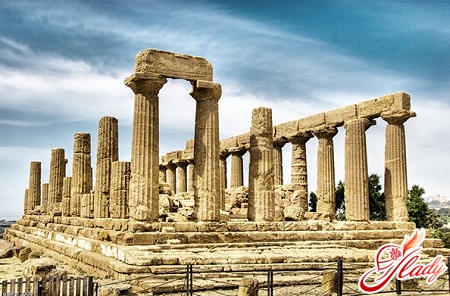


Province of Agrigento
Valley of the Temples Valley of the Temples is a zonearchaeological excavations, stretching over an area of 13,000 hectares and being an object of UNESCO, which has no analogues among the ancient Greek complexes. Here there are grandiose buildings of VI-V centuries BC, executed in Doric style. Among them, we can single out the Temple of Concord, the Temple of Asclepius, the Temple of Hercules, the tomb of Theron, the Temple of Hera and others. These attractions, collected in one place, are the pearl of the excursion program of Agrigento. If you decide to make a trip to the valley of the temples yourself, then try to choose the most successful time: some of the shrines work until 19-00, while the other is open all night, illuminating the darkness with beautiful backlighting.
Monastery of the Holy Spirit The monastery was built inend of the XIII century and is called Bataranni, which means "great abbey", for its impressive size. The building was erected from sandstone and limestone with an original construction of vaults and a nave decorated with stucco molding. At present, this monument of the Middle Ages, which has preserved its original appearance, serves as a city museum, where you can see the mock-up of the center of the city of Agrigento.
Greek Church of Our Ladyhistorical and cultural sites on the island of Sicily, the Greek Church of Our Lady was rebuilt from the Greco-Byzantine cathedral, which largely affected the facade of the building: there are preserved frescoes of the XIV century and a special Sicilian charm of the Gothic style.
Cathedral The cathedral was built in the XI century inthe honor of Saint Gerland. The temple was erected in the highest point of Agrigento and over the centuries has been repeatedly destroyed due to earthquakes and landslides. Being a vivid example of interpenetration of cultures, the cathedral at the same time retained the features of Gothic and Baroque, Arabic, Norman and Spanish architectural styles.
In addition to temples, monasteries and cathedrals in the region of Agrigento, you can visit the Archaeological Museum, located on the site of the shopping area of ancient times. 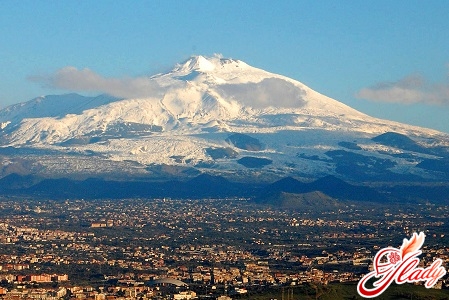


Province of Catania
Fountain with a black elephant Cathedral Square withfountain with an elephant of black basalt is the visiting card of the Catania region. On the back of the elephant there flaunts an Egyptian obelisk with a cross. The history of the origin of this emblem of the city has acquired legends, but it is for certain known that the mention of the black elephant is in the chronicle, dated 1239.
Cathedral of St. Agatha Opposite the Fountainwith a black elephant is the Cathedral of St. Agatha, built on the site of the term Akiliana. In the XI century the church was rebuilt in the Baroque style. The cathedral is decorated with frescoes and a sculptural bust of St. Agatha. Here the ark with relics is kept. Inside the church there is the tomb of Vincenzo Bellini, a composer born in Catania. There are other attractions in Catania: for example, you can visit the fortress Ursino, where the city museum is now located, or the archaeological zone of the Roman amphitheater. In addition to architectural objects, a modern water park "Etnaland" was built in Catania.
The volcano of Etna The most important place to visitCatania, and the whole island of Sicily, is the volcano Etna. Such attractions, which nature itself creates, always attract tourists from all over the world. Etna is the highest active volcano in Europe. The last recorded eruption was in January 2011, and in its history, Etna erupted about 200 times. In ancient times people associated the wrath of the volcano with the wars of Greek and Roman mythological creatures: gods and titans. At present, the territory around Etna is recognized as a national park. You can visit the volcano both with an excursion, and independently on any of the 3 existing routes. However, be careful, because the volcano is just asleep, and there are semi-active craters on its slopes, so if you decide to climb it on foot, it will be better to get the support of an experienced escort.


Province of Messina
Among the architectural and historical monuments inthe region of Messina you can visit the church of Santa Maria Annunziata dei Catalani, the Duomo, the fountain of Orion and the fountain of Neptune, made by a pupil of Michelangelo, as well as the regional museum, which presents a rich collection of paintings. In the area of the city of Taormina a special place is occupied by the Ancient Theater, the view from which is called the "panorama of perfection". In addition to it you can visit Naumakhia, the ruins of which give an idea of the staged water battles conducted on them. Attention also deserves the Palace of Corvaya, where is now located information tourist office, and the Cathedral of San Nicolo, and the tower of Badia Vecchia. Nature has created its attractions: the picturesque capes of Capo Sant Alessio, Capo Sant Andrea and Capo Taormina. 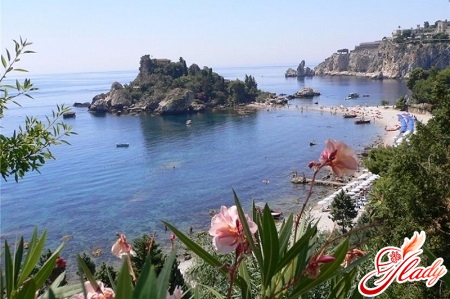


Province of Syracuse
The main object of the inspection of Syracuse is considered to bea zone of archaeological excavations. It includes the ear of Dionysius - a cleft in the rock with extraordinary acoustics; The Greek theater, which has survived to this day almost without destruction, and the Roman amphitheater. In addition, the region has an archaeological museum and the Cathedral of Syracuse. 

Province of Trapani
The main monument of the city is the sanctuary of the VirginMary with a Madonna and Child with a statue. There is also a city museum in the region. The presence of saltworks and a museum of salt distinguish Trapani from all other regions of the island of Sicily. And do not forget to visit the town of Marsala - its charm and wineries will not leave you indifferent. Sicily - an extraordinary place, literally full of sights, with a special color and unique nature. Traveling around the island, do not forget about headdresses, water, comfortable shoes and sunscreen. Una buona vacanza!
Comments
comments

Italy is the oldest country with a rich history andculture. In addition, the European boot is also extraordinarily colorful. Ancient buildings, centuries-old structures that make you literally freeze with delight, magnificent beaches, mild climate, not at all greedy for the emotions of local residents - all this and much more makes Italy attractive for tourists. But one name can not unite the diversity of original cultures, the historical heritage and the special charm of individual regions. And today our view is directed to the very south of Italy - the island of Sicily.









